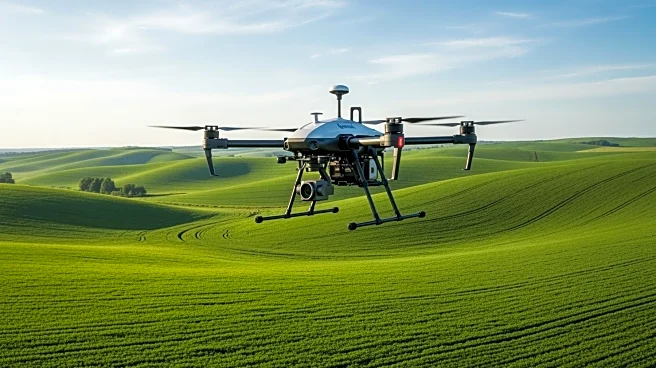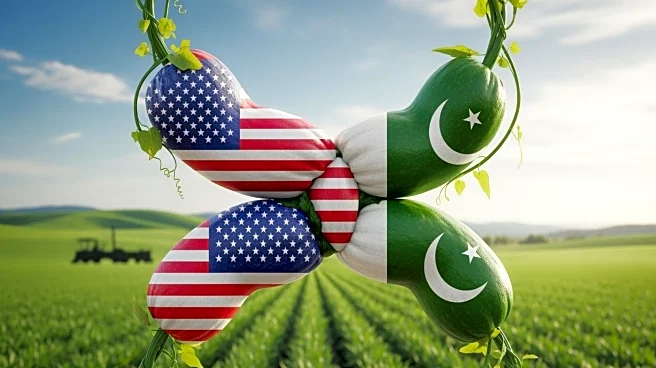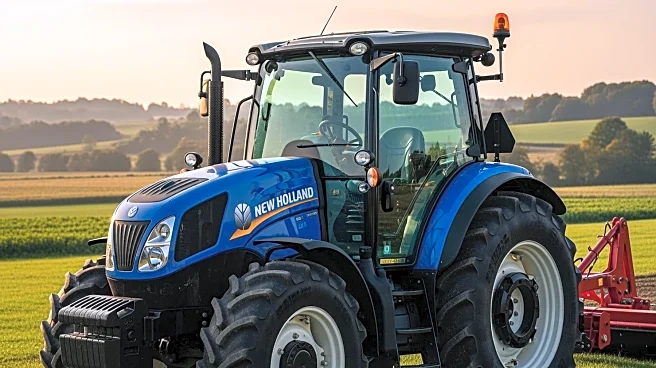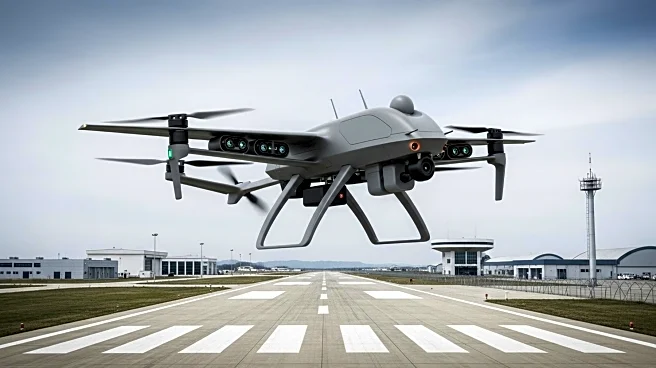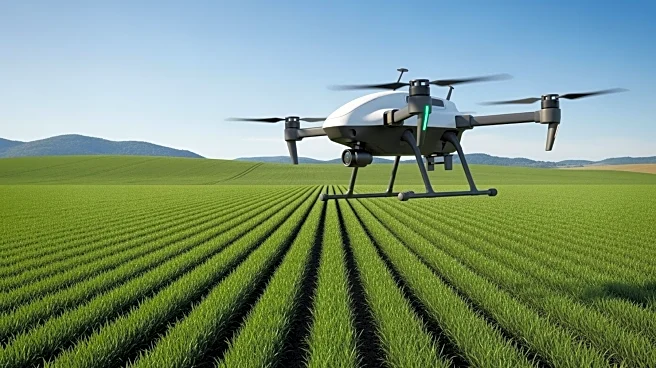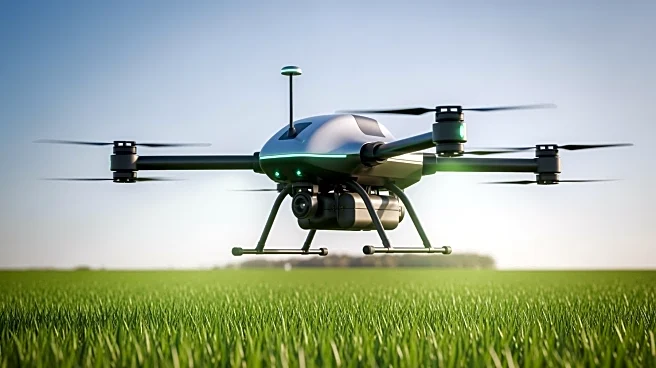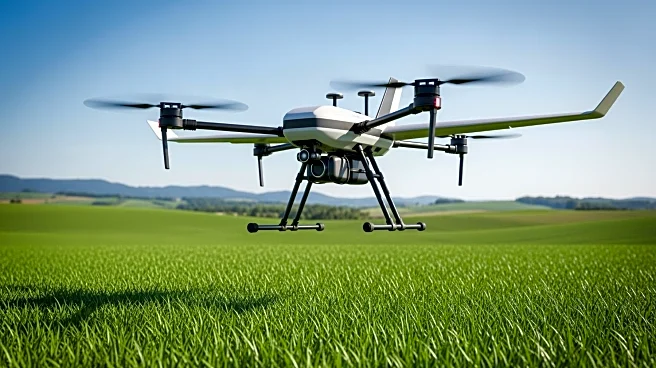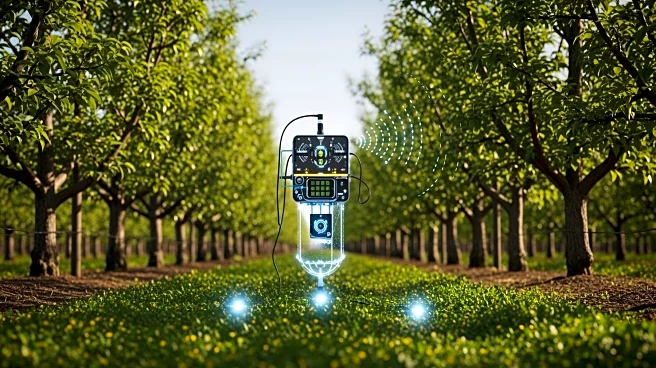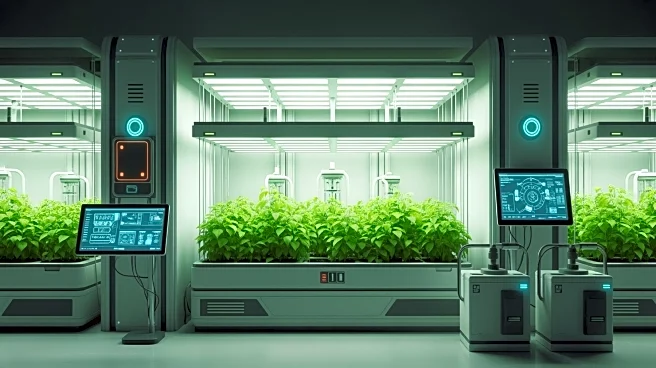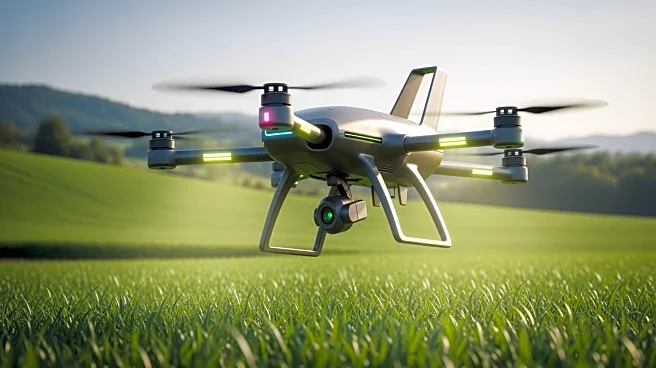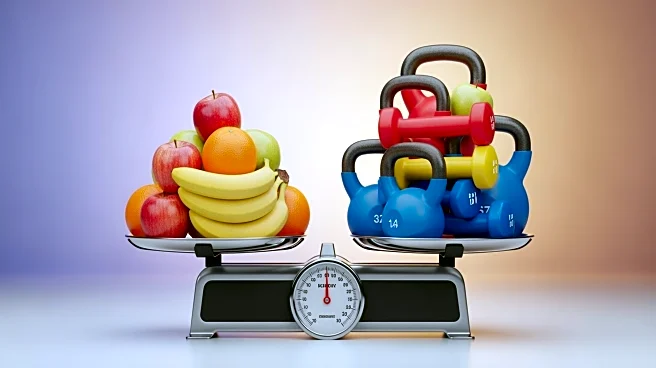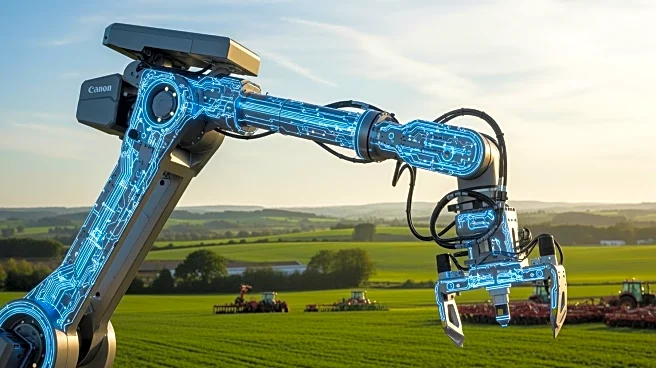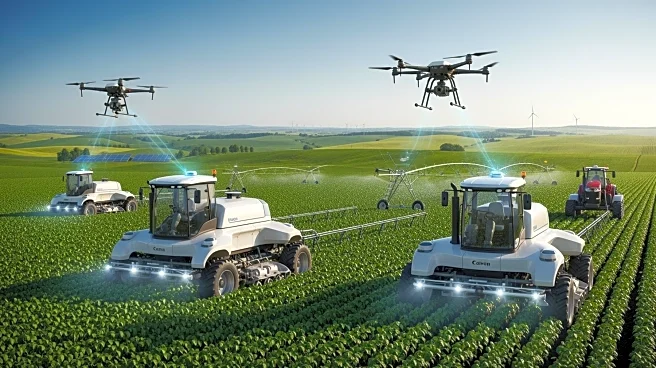What's Happening?
The agriculture drones market is expected to grow significantly, with projections indicating it will reach $10.76 billion by 2030. This growth is driven by increasing awareness among farmers about the benefits of drones in enhancing productivity, resource
efficiency, and sustainable farming practices. Drones offer real-time aerial data for crop monitoring, soil analysis, and precision spraying, which reduces waste and increases yield. The versatility of agriculture drones allows them to be used for seeding, spraying, mapping, and yield forecasting, supported by advances in automation, imaging, and battery technology. The market is further bolstered by supportive government policies, rising interest in smart farming, and the growing ecosystem of Agri-tech startups.
Why It's Important?
The expansion of the agriculture drones market is significant for the U.S. agricultural sector, as it promises to transform traditional farming practices into more efficient and sustainable operations. The adoption of drones can lead to increased crop yields and reduced environmental impact, benefiting both large-scale and smallholder farms. This technological shift is crucial in addressing labor challenges and optimizing resource usage, which are pressing issues in the agricultural industry. The growth of this market also indicates a broader trend towards smart farming and precision agriculture, which can enhance food security and contribute to climate-resilient farming practices.
What's Next?
The agriculture drones market is expected to continue its growth trajectory, with small payload drones witnessing the highest growth rate due to their affordability and ease of use. These drones are particularly suited for smallholder farms and fragmented agricultural landscapes, offering advanced technologies for crop health monitoring and soil condition analysis. The smart greenhouses segment is also anticipated to grow significantly, driven by the demand for automation and precision control in high-value crop cultivation. As government initiatives and subsidies support the adoption of drone technology, the market is poised for further expansion, particularly in regions like Asia Pacific, which currently holds the largest share.
Beyond the Headlines
The integration of drones in agriculture could lead to long-term shifts in farming practices, promoting more sustainable and efficient methods. The use of drones for precision agriculture can reduce the environmental impact of farming by optimizing input efficiency and minimizing waste. Additionally, the growing ecosystem of Agri-tech startups and supportive government policies may drive innovation and further advancements in drone technology, potentially leading to new applications and solutions in the agricultural sector.
